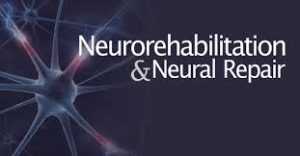Artículos relacionados
Abstract
Background. Trunk function is important for standing balance, mobility, and functional outcome after stroke, but few studies have evaluated the effects of exercises aimed at improving core stability in stroke patients.
Objective. To investigate the effectiveness of core stability training on trunk function, standing balance, and mobility in stroke patients.
Methods. An assessor-blinded, randomized controlled trial was undertaken in a stroke rehabilitation ward, with 32 participants randomly assigned to an experimental group or a control group (n = 16 each). The experimental group received 400 minutes of core stability training in place of conventional programs within total training time, while the control group received only conventional programs. Primary outcome measures were evaluated using the Trunk Impairment Scale (TIS), which reflects trunk function. Secondary outcome measures were evaluated by pelvic tilt active range of motion in the sagittal plane, the Balance Evaluation Systems Test–brief version (Brief-BESTest), Functional Reach test, Timed Up-and-Go test (TUG), and Functional Ambulation Categories (FAC). A general linear repeated-measures model was used to analyze the results.

Results. A treatment effect was found for the experimental group on the dynamic balance subscale and total score of the TIS (P = .002 and P < .001, respectively), pelvic tilt active range of motion (P < .001), Brief-BESTest (P < .001), TUG (P = .008), and FAC (P = .022).
Conclusions. Core stability training has beneficial effects on trunk function, standing balance, and mobility in stroke patients. Our findings might provide support for introducing core stability training in stroke rehabilitation.
Neurorehabilitation & Neural
Koshiro Haruyama, RPT, MSc, Michiyuki Kawakami, MD, PhD, Tomoyoshi Otsuka, MD, PhD
 Blog de Fisioterapia Fisioterapia
Blog de Fisioterapia Fisioterapia



